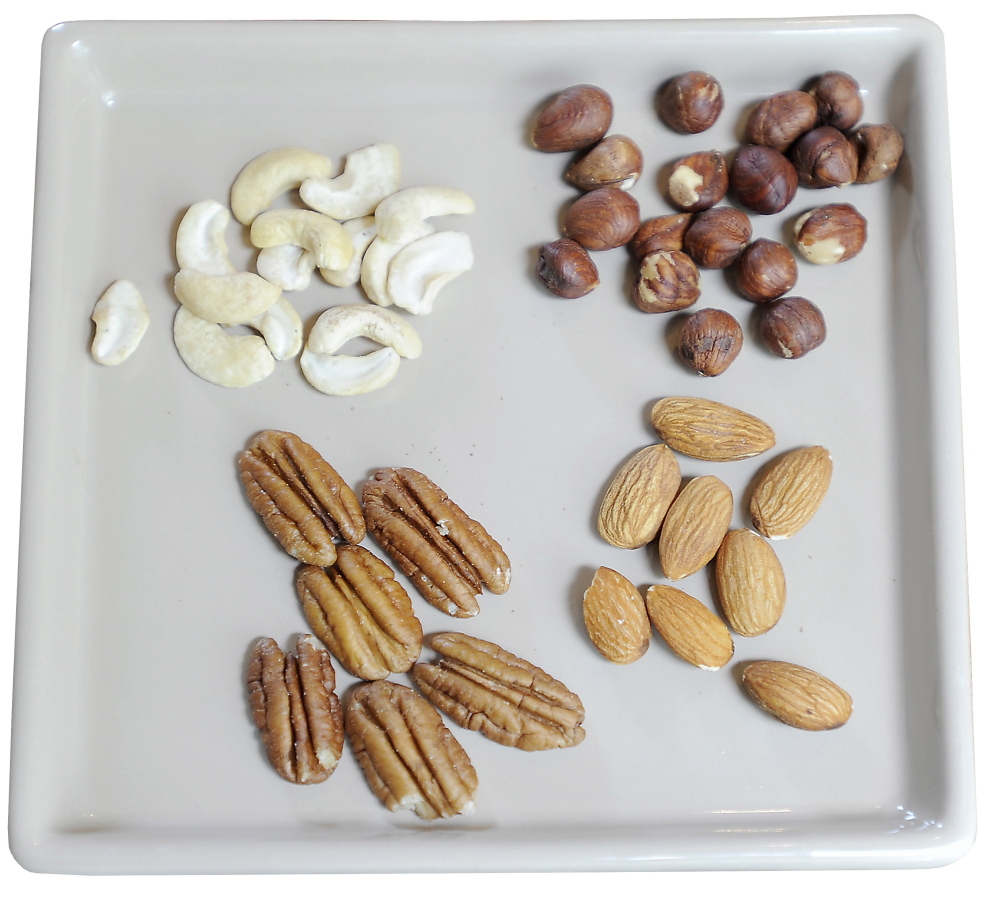I like to think I am a humble person. But when someone starts off a conversation with the phrase “I loved your article on …” I puff up like a proud Tom turkey just pardoned by the president. So when an email discussion with a friend started off with my five favorite words, I wasn’t prepared for the ego deflation her ensuing question precipitated:
So with all this talk about California water shortages and how it takes gallons of water to raise even a single almond, pistachio or walnut there, what is the most sustainable nut to eat if you live in Maine?
Uhhhh, I have no idea. Boom! Perceived expert to charlatan in a single query. Humbleness firmly back in place, I set out to find out what kind of nuts live in Maine.
According to David Fuller, an Agriculture and Non-Timber Forest Products Professional with the University of Maine Cooperative Extension, Maine is a tough place for nuts, even the ones you think can grow here. Some (like black walnut and hickory) are not hardy enough to thrive throughout the state, while butternuts are susceptible to canker. Fuller says our native filbert tree is called beaked hazel – named because its husk with nut in tow resembles a bird’s head – and while it is quite popular as a foraged nut in the County, it’s also a shy producer of very small nuts.
“I have had pretty good luck with hybrid hazelnuts,” said Fuller. These trees produce nuts larger than the beaked hazel and produce regularly. But before you consider making your own local version of Nutella, be aware that these hazelnuts vary in size and shell thickness (some have very thick shells) and are favorites of hungry rodents and bluejays.
Aaron Anker, chief granola officer at GrandyOats, a Maine-based company that produces a million pounds of organic granola, trail mix and roasted nuts annually, points out that pecans are native to Mississippi River valleys, thrive in the southeastern and south central United States, and are often grown using sustainable practices. The largest producer on the East Coast is Georgia, which grew more than 73 million pecans in 2013. Anker says his company will begin sourcing organic pecans from an orchard in Missouri this fall.
“Food for Health: Choose and Use the Very Best Foods for Your Family and Our Planet” authors Barton Seaver (a Maine resident) and P.K. Newby note that pecan trees live to be more than 100 years old, so gathering nuts from them is a pretty sustainable prospect. Pecan trees still require quite a bit of water – a mature tree can drink up to 200 gallons of water per day during its growing season to produce between 1,000 and 1,500 nuts annually. But it’s hard to compare it to other mostly California-grown nuts, as just 2 percent of the national pecan production is in the Golden State, where nut production is under scrutiny because of the severe drought. A more tangible measure is that a Georgian pecan travels almost 2,000 miles less than a California almond does to get to Maine.
So if sometimes you feel like a nut, have a pecan.
MAPLE-PECAN CREAM TART
I adapted this recipe from one I’ve been making out of my very first cookbooks, the “Good Housekeeping Illustrated Cookbook.” It works well with almost any kind of tree nut.
Makes one 8- by 11-inch rectangular tart
½ cup white sugar
½ cup granulated maple sugar
3 large egg whites, at room temperature
1/8 teaspoon salt
1/2 cup Maine maple syrup
¾ cup chopped pecans, toasted
¾ cup unsalted soda crackers, crushed
1 teaspoon baking powder
16 intact pecan halves
1 cup heavy whipping cream
Preheat the oven to 350 degrees F. Butter the bottom and sides of an 8- by 11-inch rectangular tart pan. A large round one will work, too. Regardless of the pan’s shape, it’s best that it have a removable bottom.
Combine the white and maple sugars in a small bowl. Put the egg whites and salt in a large mixing bowl and beat them together with an electric mixer at high speed until they’ve formed soft peaks. Keep whipping them as you slowly add the sugar, 2 tablespoons at a time until the cup of sugar is fully incorporated and you’ve got glossy peaks.
Slowly mix in 2 tablespoons of the maple syrup. Fold in the chopped pecans, crackers and baking powder. Spread the mixture into the prepared tart pan, taking care to make the sides high, so that there is a good indentation in the middle to (eventually) hold the maple whipped cream.
Bake the shell 25 to 35 minutes or until the meringue is golden but not brown. Remove from the oven and cool completely. Refrigerate the shell at least 2 hours, preferably overnight.
Meanwhile, put ¼ cup of the remaining maple syrup in a nonstick skillet and add the pecan halves, coating them with syrup. Cook over medium-high heat, letting the syrup bubble up around the nuts. When the syrup is caramelized and very sticky and the nuts are coated, they are sufficiently candied. Lift the nuts out of the pan 1 at a time to let them cool separately on waxed paper or a silicone mat.
When you are ready to serve the tart, whip the cream to soft peaks. Add the final 2 tablespoons of maple syrup and whip the cream a bit more. Spread the cream in the meringue cavity. Top with the candied pecans and serve. You can hold the filled tart in the refrigerator for several hours.
Christine Burns Rudalevige is a food writer, recipe developer and tester and cooking teacher in Brunswick. Contact her at cburns1227@gmail.com.
Send questions/comments to the editors.


